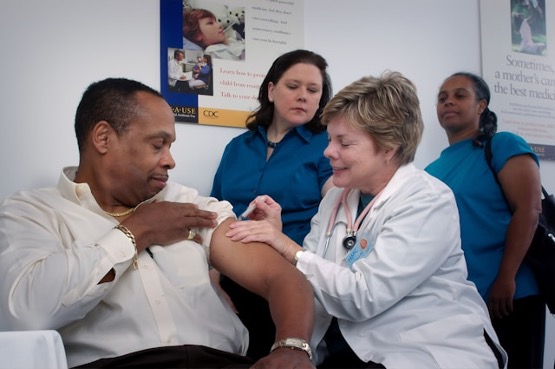 Jennifer Yruegas, as the Dean at Pacific University College of Business, has demonstrated remarkable success in enhancing MBA enrollment, with the introduction of a Healthcare Management MBA that equips students with the essential skills and knowledge required to excel in business and healthcare. In the following article, Jennifer Yruegas discusses interprofessional education (IPE) in the healthcare sector, exploring how collaborative learning creates better patient outcomes through enhanced teamwork and communication skills.
Jennifer Yruegas, as the Dean at Pacific University College of Business, has demonstrated remarkable success in enhancing MBA enrollment, with the introduction of a Healthcare Management MBA that equips students with the essential skills and knowledge required to excel in business and healthcare. In the following article, Jennifer Yruegas discusses interprofessional education (IPE) in the healthcare sector, exploring how collaborative learning creates better patient outcomes through enhanced teamwork and communication skills.
Within the healthcare landscape, providing high-quality patient care requires more than just clinical expertise—it demands effective teamwork among healthcare professionals from various disciplines. Interprofessional education is a pivotal approach to cultivating this partnership, preparing future healthcare providers to work seamlessly as interdisciplinary teams.
Jennifer Yruegas on Understanding Interprofessional Education
Interprofessional education is a structured approach that brings together students from diverse healthcare disciplines, such as medicine, optometry, pharmacy, and allied health professions, to learn together and from each other. By engaging in joint learning experiences, students gain a deeper understanding of their own roles and responsibilities within the healthcare team while developing a greater appreciation for the contributions of other disciplines.
Promoting Collaborative Learning
IPE initiatives create opportunities for students to engage in collaborative learning activities, such as case-based discussions, simulations, and team-based projects. Jennifer Yruegas says that these activities encourage students to share their unique perspectives, knowledge, and skills, fostering a collaborative approach to problem-solving and decision-making. By working together, students learn to leverage each other’s strengths and expertise, ultimately leading to more comprehensive and personalized patient care.
Enhancing Teamwork Skills
One of the primary goals of IPE is to enhance teamwork skills among healthcare professionals. Through collaborative learning experiences in the Pacific University College of Business Healthcare MBA, students develop essential teamwork competencies, such as communication, leadership, and conflict resolution. By practicing effective communication strategies and learning to navigate these relationships, students are better prepared to work collaboratively in real-world clinical settings, where effective teamwork is essential for delivering safe and coordinated patient care.
Improving Patient Outcomes
Jennifer Yruegas of Pacific University College of Business explains that the collaborative nature of interprofessional education directly contributes to improved patient outcomes. Research has shown that healthcare teams with strong interprofessional relationships are better equipped to address complex patient needs, reduce medical errors, and enhance patient satisfaction. By working together seamlessly, healthcare professionals can streamline care delivery processes, prevent gaps in communication, and ensure that patients receive timely, efficient, and comprehensive treatment.
Realizing the Value of Interprofessional Collaboration
IPE not only benefits students but also has far-reaching implications for complex healthcare systems. Jennifer Yruegas of Pacific University College of Business notes that by fostering a culture of collaboration and mutual respect among healthcare professionals, IPE initiatives contribute to a more cohesive and efficient healthcare workforce. Moreover, it has been associated with cost savings, reduced hospital readmissions, and improved overall quality of the healthcare system. As a premier institution in healthcare and research, Pacific University offers education to aspiring professionals across a range of fields including pharmacy, physician assistance, speech therapy, optometry, audiology, occupational and physical therapy, and athletic training. Within this broad spectrum, the College of Business’ Healthcare Management MBA program offers IPE opportunities, making comprehensive interdisciplinary learning accessible to all its healthcare students.
Challenges and Opportunities
While the advantages of interprofessional education in healthcare education are undeniable, there are several obstacles that institutions must overcome to fully realize its benefits. Jennifer Yruegas, from Pacific University College of Business, highlights some of these challenges, including logistical constraints, faculty resistance, and differences in curricular requirements among various disciplines.
Logistical challenges may arise from scheduling conflicts or the need for physical space conducive to collective learning. Additionally, faculty members may resist integrating IPE into their courses due to unfamiliarity with collective teaching methods or concerns about added workload. Moreover, aligning curricular requirements across different healthcare and educational programs can be challenging, as each discipline may have its own unique objectives and accreditation standards.
However, despite these challenges, many institutions can employ various strategies to successfully implement IPE. One approach is to invest in faculty development programs to equip educators with the skills and knowledge needed to facilitate interprofessional learning experiences effectively. Providing incentives and recognition for faculty who actively participate in IPE can also help overcome resistance and promote buy-in. Furthermore, leveraging technology and online platforms can help overcome logistical barriers by facilitating virtual collaboration and asynchronous learning opportunities. At Pacific University’s College of Business, the faculty teaching in both the Healthcare Management MBA and the General Management MBA programs are shared, ensuring alignment of curricula between the two disciplines. This strategic overlap enhances the depth and breadth of the educational experience, offering students a more comprehensive and integrated learning journey.
Lastly, institutions can establish interdisciplinary task forces or committees to streamline the integration of IPE into existing curricula and ensure alignment with accreditation standards. By fostering a culture of collaboration and innovation, institutions can overcome these challenges and unlock the full potential of IPE to prepare future healthcare leaders capable of delivering high-quality, patient-centered care in an increasingly complex healthcare landscape.
Conclusion
Interprofessional education plays a vital role in shaping the healthcare workforce of tomorrow, fostering collaboration, and improving patient outcomes. Jennifer Yruegas of Pacific University College of Business says that by bringing together students from diverse healthcare disciplines, IPE initiatives promote teamwork, enhance communication skills, and instill a shared commitment to patient-centered care. As healthcare systems continue to evolve, investing in interprofessional education becomes increasingly essential to meet the complex needs of patients and communities.


